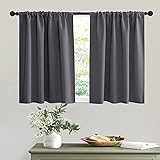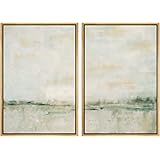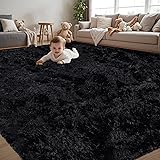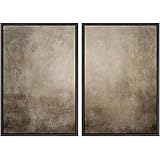The journey to creating a truly comfortable and stylish home can often be fraught with subtle pitfalls that, once noticed, become impossible to ignore. Many homeowners find themselves living in spaces that, despite their best intentions, somehow feel off—cluttered, uninviting, or simply not quite right. These aren’t just matters of personal taste; often, they are fundamental home design mistakes that an architect’s eye can quickly identify and resolve. The video above sheds light on ten such common design blunders, offering expert fixes to transform your living environment.
Indeed, a well-designed home should serve as a sanctuary, a reflection of its inhabitants, and a place that supports daily living with ease and beauty. However, certain choices, often made inadvertently, can undermine these aspirations. The subsequent discussion aims to elaborate on these critical areas, providing further context and actionable strategies to help you avoid these prevalent interior design pitfalls and cultivate a home that feels both smarter and more enjoyable.
Avoiding Common Home Design Mistakes: Architectural Insights for a Better Living Space
Navigating the world of home aesthetics can be daunting, particularly when aiming for longevity and functionality. It is often observed that a home’s overall appeal and practical utility are diminished by choices that, at first glance, might seem minor. Understanding these prevalent home design mistakes is the first step toward rectifying them and establishing an environment that truly supports and inspires. Let us delve into some of the most significant design errors and their strategic, architect-approved solutions.
The Trap of Trendy Over Timeless: Building a Foundation of Enduring Style
One of the most insidious errors in home design involves prioritizing transient trends over enduring elegance. The fleeting allure of a popular aesthetic, such as the once ubiquitous “grey on grey” craze, often leads to costly updates just a few years down the line. It is a common occurrence for expensive permanent fixtures to become dated long before their intended lifecycle is complete, necessitating significant investment in re-dos. This approach, akin to chasing fashion fads in personal wardrobes, inevitably leads to an outdated look that can feel exhausting to live with.
For a lasting aesthetic, the fundamental elements of a home, such as walls, flooring, and fixed cabinetry, are best kept neutral and classic. These foundational pieces establish a calm and versatile backdrop, much like a canvas awaiting its vibrant artwork. Should a desire for contemporary flair arise, it is recommended that this be introduced through easily swappable elements. Accent cushions, area rugs, art pieces, and decorative objects are examples of layers that can be updated with minimal fuss and expense, allowing a home’s style to evolve gracefully without undergoing continuous, major renovations.
Understanding Scale: The Impact of Oversized Furniture on Space and Flow
The selection of furniture is often approached with an emphasis on individual pieces rather than their harmonious integration into a space. A common blunder involves introducing oversized furniture into a room, particularly in smaller living quarters. This mistake transforms a living area into what feels like an obstacle course, impeding natural circulation and diminishing the room’s perceived size. An apartment in London, struggling to accommodate a large sectional sofa in a diminutive living room, perfectly illustrates how spatial harmony can be disrupted.
Proper space planning necessitates a careful consideration of furniture dimensions relative to a room’s floor plan and circulation paths. Before making any purchases, accurate measurements of both the room and the proposed items are crucial. In compact areas, multi-functional furniture becomes an invaluable asset, similar to a Swiss Army knife for your home. Convertible sofa beds, extendable dining tables, and nesting side tables offer flexibility and utility, ensuring that every square meter is maximized for both practical use and comfortable movement. Designing for adaptability, rather than purely for aesthetics, is paramount for functional living.
Carpeting Choices: When Comfort Turns into a Design Liability
While the plushness of carpet can be appealing, its widespread application throughout a home, especially in inappropriate areas, often leads to significant design and hygiene issues. Imagine a dwelling where even the bathroom is carpeted; such a scenario can evoke the unsettling ambiance of a neglected motel from a bygone era. Carpets are inherently porous, making them efficient traps for dust, allergens, odors, and unsightly stains. Furthermore, they exhibit uneven wear patterns in high-traffic zones and quickly become unhygienic when exposed to humidity or spills, often requiring costly replacement much sooner than anticipated.
A more judicious approach to flooring involves limiting wall-to-wall carpeting to areas where its benefits truly outweigh its drawbacks, such as bedrooms, where sound dampening and warmth are highly valued. For the majority of a home’s footprint, more durable and easily maintainable options are preferable. Hardwood, engineered wood, or high-quality vinyl flooring offer resilience and are simpler to clean, contributing to a healthier environment. Area rugs can then be strategically introduced to add softness, absorb sound, and inject decorative elements, with the added advantage of being easily cleaned, swapped, or replaced to refresh a space without a major overhaul.
The Rigidity of Permanent Partitions: Embracing Architectural Flexibility
In modern architectural thought, a premium is placed on a home’s flexibility and its capacity to adapt to evolving needs. Consequently, the installation of permanent partition walls can often be a restrictive design misstep. While intended to delineate space, fixed walls can inadvertently stifle natural light, impede airflow, and complicate future renovations, potentially diminishing a property’s resale value. Their permanence means any subsequent modification is both costly and disruptive, limiting the dynamic potential of a living area.
A more enlightened strategy favors adaptable spatial dividers over unyielding structures. Solutions such as sliding panels, substantial open bookshelves, or even heavy curtains can define areas for privacy or function when needed, yet retain the overarching sense of openness and fluidity. These movable elements, much like stage props, allow a room to transform, offering residents the power to reconfigure their living environment based on activity or mood. This architectural approach ensures that a home can gracefully accommodate changes in lifestyle or family structure without requiring structural alterations.
Beyond Thematic Overload: Curating Rather Than Caricaturing Your Home
There is a distinct line between drawing inspiration from a theme and allowing it to completely overtake a home’s decor, transforming it into a caricature. A beach apartment replete with seashell lamps, rope mirrors, and anchor-patterned cushions, for instance, risks resembling a souvenir shop more than a tranquil coastal retreat. Such excessive thematic commitment traps a space in a particular aesthetic, which can age poorly as tastes evolve, causing the home to feel dated and uninspired rather quickly.
True design sophistication lies in abstracting the essence of an inspiration rather than duplicating its motifs directly. If a coastal vibe is desired, the emphasis should be on natural textures, a palette of serene, light colors, and perhaps a few subtle, well-chosen references. The aim is to evoke a feeling, much like a carefully composed piece of music, rather than to literally represent it. This allows the home to maintain a sense of understated elegance and adaptability, ensuring it remains timeless and welcoming without descending into overt, almost childlike, thematic literalism.
Bringing Life Indoors: The Vital Role of Live Greenery
A home devoid of living plants can often feel stark, inanimate, and sterile, much like a waiting room rather than a vibrant personal space. The absence of greenery creates an environment that lacks warmth, organic texture, and a connection to the natural world. This oversight is a simple yet significant design blunder that can easily be remedied, transforming a flat interior into a lively, breathing space. Plants do far more than merely decorate; they inherently infuse vitality.
Beyond their well-documented ability to improve indoor air quality, plants soften the harsh lines of architectural elements and man-made furnishings. They introduce varying shades of green, intricate textures, and a sense of movement that artificial objects cannot replicate. Incorporating easy-care varieties such as snake plants, Pothos, or even an olive tree can be incredibly impactful. A strategy of grouping a few larger plants, rather than scattering numerous small ones, often yields a more sophisticated and less cluttered look. Low-maintenance succulents, like the one proudly showcased by the architect, offer a perfect starting point for those new to indoor gardening, requiring minimal attention while delivering maximum visual benefit.
The Unseen Necessity: Integrating Thoughtful Storage Solutions
The impact of inadequate storage on a home’s functionality and aesthetic cannot be overstated. Walk into a home where daily essentials—coats, shoes, mail, or packages—are perpetually scattered, and the immediate impression is one of disorganization and cramped living, regardless of the property’s actual size. Storage is not merely an optional amenity; it is the fundamental framework upon which a functional, calm home is built. Neglecting it during the initial design phase often leads to reactive, less effective solutions later, frequently at the expense of valuable living space.
Effective storage must be conceptualized as an integral component of the overall design, not an afterthought. This involves maximizing vertical space, much like building upward in a city to make the most of limited ground. Custom shelving, floor-to-ceiling cabinetry, and cleverly designed niches can drastically increase capacity. Furthermore, furniture that performs double duty, offering both seating or display and hidden storage, is a strategic choice. Benches with lift-up lids, ottomans with internal compartments, and media units that conceal electronics and media are excellent examples of how form and function can converge to create a more organized and serene living environment.
The ‘Showroom’ Look: Injecting Personality Beyond Perfect Coordination
A home that appears to have been lifted directly from a furniture catalog, with every item perfectly matched in color and style—a beige sofa complementing a beige rug and beige curtains—can paradoxically feel soulless and unwelcoming. While coordination has its place, an overly curated “showroom” aesthetic often lacks the warmth and authenticity that defines a truly lived-in space. Such a homogeneous presentation inadvertently suggests a temporary stage rather than a deeply personal sanctuary, waiting for an estate agent’s photoshoot rather than daily life.
The most memorable and comfortable homes are those that embrace a degree of artful imperfection and thoughtful juxtaposition. Consider pairing a sleek, modern sofa with a unique vintage table, or allowing neutral walls to serve as a backdrop for vibrant, personal artwork. It is the interplay of different textures, periods, and stories that grants a home its character and depth. These minor ‘clashes’ or deliberate variations prevent a space from feeling sterile and instead cultivate an atmosphere that is rich with personality, reflecting the unique journey and tastes of its inhabitants.
Taming the Palette: Achieving Harmony Over Color Chaos
The strategic use of color is a powerful tool in home design, capable of evoking specific moods and unifying spaces. Conversely, an undisciplined approach, characterized by a riot of disparate, loud colors across different rooms, can lead to visual fatigue and sensory overload. Rather than generating an invigorating energy, such a chaotic palette often induces restlessness, creating an environment that feels disjointed and overwhelming. Colors, when thoughtfully applied, should guide the eye and contribute to a sense of peace and cohesion throughout the home.
A more effective methodology involves establishing a cohesive base palette that quietly flows through the entire living space. This foundation, often composed of neutral tones, serves as a calming constant. Into this harmonious setting, carefully chosen hints of bold color can then be introduced to create focal points and inject personality. A single accent wall, a collection of brightly colored cushions, or striking artwork can provide these pops of vibrancy. When the surrounding palette is understated, these bold accents gain increased prominence, creating a visually stimulating yet balanced environment that delights rather than overwhelms.
Reconsidering Human Scale: Designing for Comfort and Daily Life
The ultimate test of a home’s design lies in how well it accommodates the human body and facilitates daily activities. A common, yet often overlooked, design flaw involves an oversight of “human scale”—the proportion and dimension of elements relative to the people using them. Experiences such as attempting to eat breakfast at excessively high bar stools or reaching for items on shelves positioned out of comfortable reach highlight how poorly dimensioned fixtures can turn simple tasks into frustrating annoyances. A beautiful chair that causes discomfort after a short period, for example, signals a fundamental design failure, regardless of its aesthetic appeal.
The corrective measure involves a deliberate focus on ergonomics and practical usability. Prior to installation or purchase, it is imperative to test dimensions against one’s own body. Kitchen counter heights should align comfortably with elbow level, and seating should provide adequate support without being too deep or shallow. A home’s design should prioritize comfort and functionality, ensuring that every element supports the ease and enjoyment of its occupants. This thoughtful consideration transforms a dwelling from a mere structure into a genuinely livable and comfortable haven.
Designing for Authenticity: Your Home, Not Your Guests’ Expectations
The most pervasive and subtly damaging of all home design mistakes involves designing a home not for its actual inhabitants, but for the imagined expectations of others. When a living space is conceived primarily to impress guests or adhere to societal norms, it risks becoming a staged environment rather than a genuine reflection of its owners’ lives and preferences. This disconnect can lead to living in a perpetual “show home” where comfort and personal utility are sacrificed for an external validation that often never materializes, leaving occupants feeling alienated from their own space.
The antidote to this pervasive error lies in radical self-reflection. Ask yourself honestly: “Who truly lives here, and how do they actually live?” If dinner parties are a rare occurrence, perhaps a grand dining setup is less important than a sprawling, comfortable sofa where daily life unfolds. Conversely, if hosting is central to your lifestyle, then investing in a flexible dining area or social seating arrangements makes perfect sense. Your home should be an authentic extension of who you are, celebrating your habits, needs, and aesthetic preferences. It is through this genuine personalization that a home transcends mere shelter to become a deeply resonant and enjoyable sanctuary, free from the silent judgment of imaginary guests, and truly your own.











